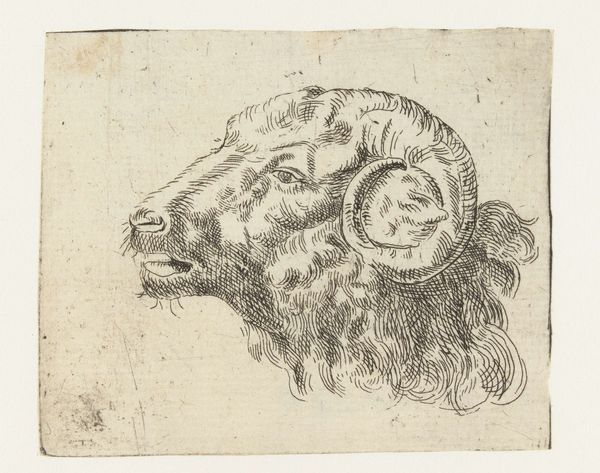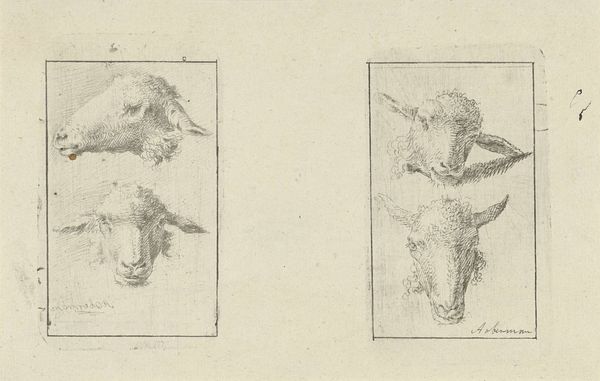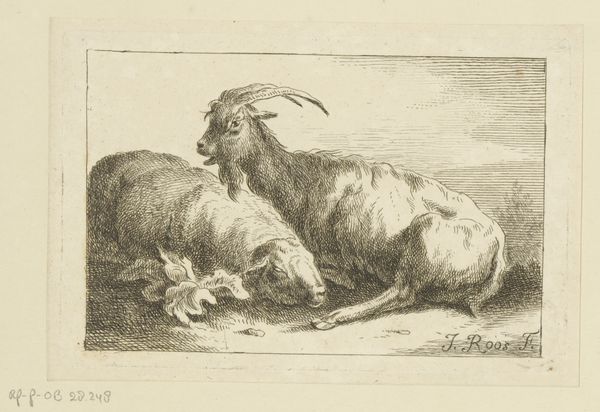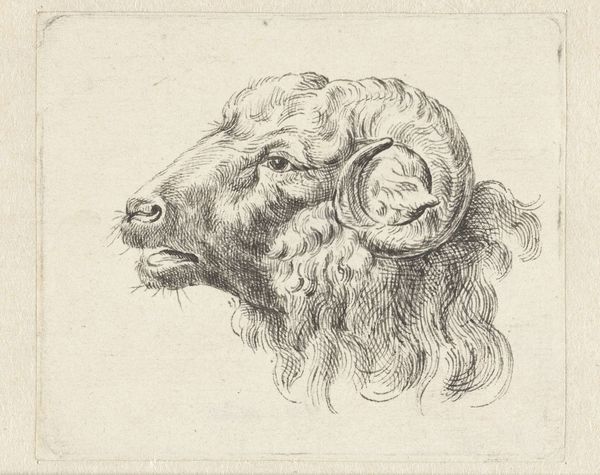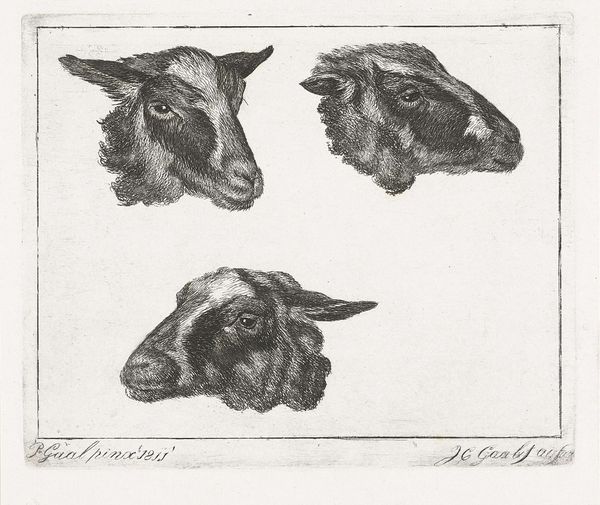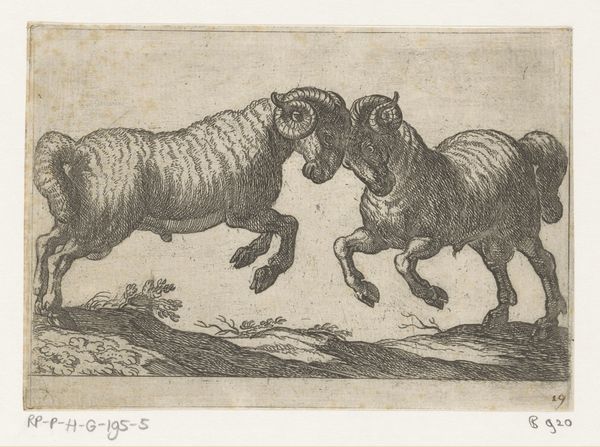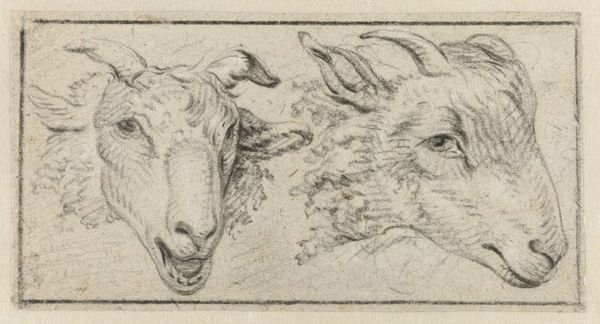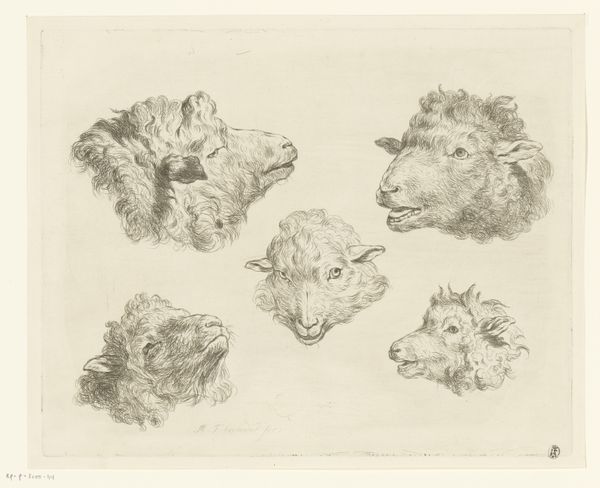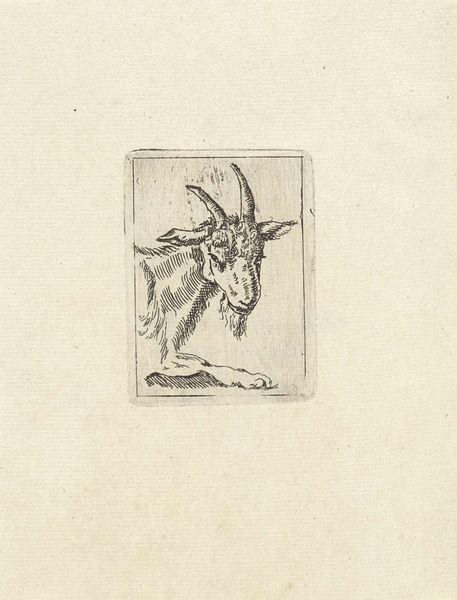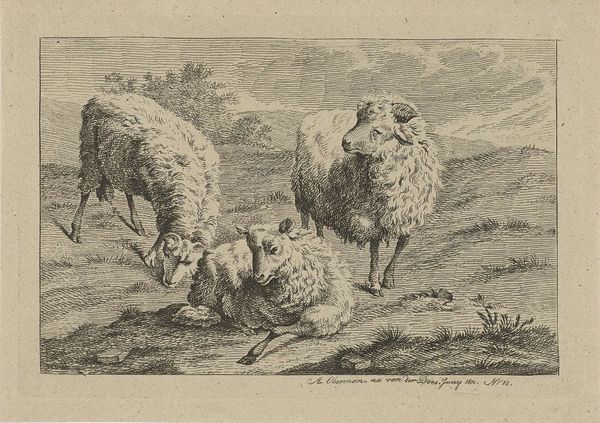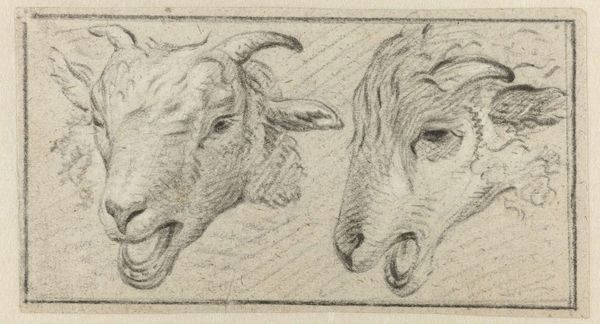
print, etching
#
portrait
# print
#
etching
#
realism
Dimensions: height 115 mm, width 129 mm
Copyright: Rijks Museum: Open Domain
Editor: Here we have "Head of a Ram and Head of a Sheep," an etching done in 1786 by Carel Webbers. The detail is impressive, particularly the rendering of the wool and the animals' eyes. I find it quite… stark, almost clinical. What strikes you most about this print? Curator: Clinical, yes, but clinical implies coldness, and I see something else—perhaps vulnerability? Two portraits, stark as you say, rendered in such a delicate medium. I think of early scientific illustrations, when observation was not just about recording, but about understanding a part of the world in a tangible way. And I feel tenderness. Almost empathy from the artist, don’t you think? Editor: Empathy? Interesting. It’s the precision that gave me pause – a certain… detached quality. The clear lines of the etching emphasizing details. But you’re right; maybe there's also some reverence. Do you think the choice to display these two animals together carries any specific significance? Curator: I wonder… Could they represent opposing aspects, perhaps within ourselves? Gentleness versus strength, docility versus dominance? Or maybe Webbers just had a great appreciation for ovine beauty. Art doesn’t always need a profound ‘meaning,’ does it? Sometimes, it can simply be an elegant study of form, a gentle, observational sketch. Editor: I agree completely. Now I'm viewing those two heads with your observations, it looks much warmer, more lifelike and gentler to contemplate. Thanks! Curator: Anytime! The best thing about art is, there’s always another head… or perspective, ready to be contemplated.
Comments
No comments
Be the first to comment and join the conversation on the ultimate creative platform.
